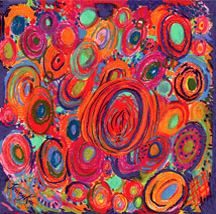Let’s be honest, Australia has some difficulty in coming to terms with its Indigenous history. Living in such a prosperous country that boasts an international identity on a sense of fairness and social justice the disparity between its representation of non-Indigenous and Indigenous Australian culture is considerably and embarrassingly large. Our overriding acceptance of Western society as the dominant social and political ‘norm’ has inevitably shaped an environment that has elevated one culture while suffocating another, and as the debate goes on surrounding the preservation and maintenance of Indigenous culture the general consensus is that most of our past efforts to achieve mainstream acknowledgement and understanding have been disappointing, to say the least. This however could be on the verge of change with initiatives like the VAMFF Global Indigenous Runway held in March this year as a part of the Melbourne Fashion Festival.
This emergence of Indigenous culture in fashion isn’t as much of an original idea as it is a revitalisation, as the Australian fashion industry is obviously aware of it’s potential with artist such as Jenny Kee and Linda Jackson drawing influence for many of their designs through painting and symbols of Indigenous artwork. But that was in the 80’s, and looking at Australian fashion today it’s clear that the need to embrace Indigenous artistry has certainly languished. That doesn’t mean the talent and community have ceased to exist however, and an event such as this proves that the industry is awakening to the need for Indigenous Australian business initiatives and mentorships to correct this disproportionate representation of Indigenous Australians in mainstream popular culture.

Jenny Kee, Optic Oz Scarf
The Global Indigenous Runway was created as an effort to promote Indigenous culture by giving Indigenous fashion designers, and models an opportunity to present their work on a national platform. Through it, Indigenous youth are able to emphasis further cultural awareness and an appreciation of identity to a wider landscape by using fashion to engage consumers with their heritage. One participant Arkie Barton, a QUT fine-arts graduate presented a runway series that paid tribute to traditional Indigenous motifs that featured as bright multi-coloured abstracted silk prints, glitter encrusted skirts and a bomber jacked embellished with the words “DREAM TIME”. Arkie explained in her interview in I-D magazine that, for her, fashion is a way to introduce people to her community by making it part of her brand’s story.


 Arkie Barton’s VMAFF Global Indigenous Runway Collection.
Arkie Barton’s VMAFF Global Indigenous Runway Collection.
The projects’ reflection on the significance of cultural origins is certainly a starting point for the conversation about the ‘self-determination’ of Indigenous Australians. And while Australia still maintains a marginalised appreciation of Indigenous culture, projects such as this offer a catalyst for change by bringing the Indigenous identity onto the catwalk, and into the spotlight.
References:
Dockery, A.M. 2010. ‘Culture and Welbeing: The Case of Indigenous Australians’, Social Indicators Research. 99-2 2 315-332
https://i-d.vice.com/en_au/article/how-fashion-can-help-us-talk-about-indigenous-culture
Date viewed: 20/09/16
http://thesheilcollection.com.au/shop/jenny-kee-optic-oz-scarf/
Date viewed: 21/09/16